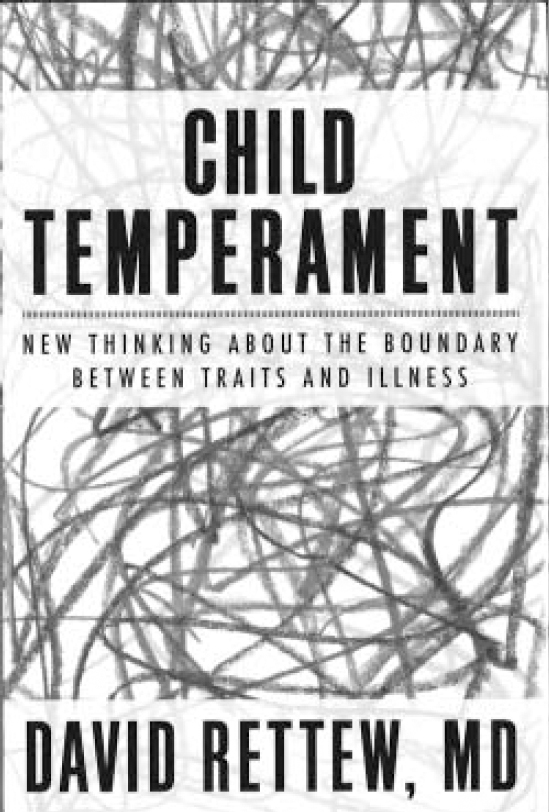
A book on child temperament is appealing to me as a child psychiatrist, as I often have to consider whether children referred to me are displaying behaviours that are to do with their temperament (personality in older youth and young adults) or whether their constellation of behaviours reaches a threshold for a psychiatric illness/disorder. Frequently, clinicians may feel more confident in treating those that cross this oft-arbitrary division of temperament to psychiatric diagnosis as we then can apply the evidence-based treatment so beloved in our current empiricist, yet increasingly resource-constrained health service. In reading this book I have become more convinced that an approach of dichotomised temperament and psychiatric illness is overly simplistic. Considering child behaviours in a more holistic dimension including their temperament offers an opportunity for understanding the child better and affords the advantage of more individualised treatment approaches that take account of their temperament types.
Written by a child psychiatrist and associate professor of paediatrics and psychiatry, this book carefully considers the often neglected arena of child temperament and its relations to child psychopathology. It is clear and readable, with a good balance of scientific research, clinical case examples, anecdotes and practical applications. It is composed of two parts.
Part I discusses temperament and what is known about its links with psychiatric Illness. First, there is a whistle-stop tourof the historical theories of temperament, such as the Greek physician Galen’s (ca. 131-200) personality types (choleric, melancholic, phlegmatic and sanguine) based on the balance or imbalance of the humours, blood, bile and phlegm, through to the Freudian and then the behaviourist account of personality development. Rettew highlights the seminal work of Stella Chess and Alexander Thomas, both child psychiatrists in the 1950s, whose studies of middle-class and disadvantaged children in New York suggested that children’s behavioural tendencies were influenced not only by the environment but also by innate biological factors.
With the historical perspective set, the book proceeds with a synthesis of the research since Chess and Thomas, including definitions, major temperament frameworks/dimensions, temperament types, and assessment and measurements tools. The gender differences in temperament and factors such as birth order and cultural perspectives of temperament are reviewed and some myths are debunked. Considerable effort is taken by the author to review and explain the complexity of the neurobiology of temperament, and to emphasise that genetic and environmental factors affect not only temperament but also each other.
The book then progresses to the interesting issue of which temperament traits are related to which psychiatric disorders. Even more stimulating is the exposition of the numerous possible mechanisms of association between temperament and psychiatric disorder (e.g. attention-deficit hyperactivity disorder and activity), including the continuum theory where psychopathology is seen as an extreme end of the temperament spectrum, or the risk model where certain temperament traits are risk factors for psychiatric illness.
The second part of the book offers a practical guide to how the new knowledge of temperament can be used by clinicians, parents and teachers to the benefit of the children in their charge. The author presents a compelling case for augmenting current clinical assessment and management with a temperament framework, including the benefits of having an understanding of parents’ personality as this offers guidance on how best to formulate management strategies for the differing temperament profiles of their children. The last chapter looks at the thorny issue of psychoactive medications, from how they might alter temperament when used in treating psychiatric illness, to whether it is ethical to use selective serotonin reuptake inhibitors to treat the constitutionally shy.
In my opinion the author succeeds in his dual goal of providing a ‘readable summary of the current science of temperament’ and a ‘scientifically informed guide to applying temperament based perspective in real life settings’. Although there is a lot to digest in this book, I will indeed be using it as a basis to ascertain which of the temperament-based screens/tools to apply routinely in clinical practice.



eLetters
No eLetters have been published for this article.